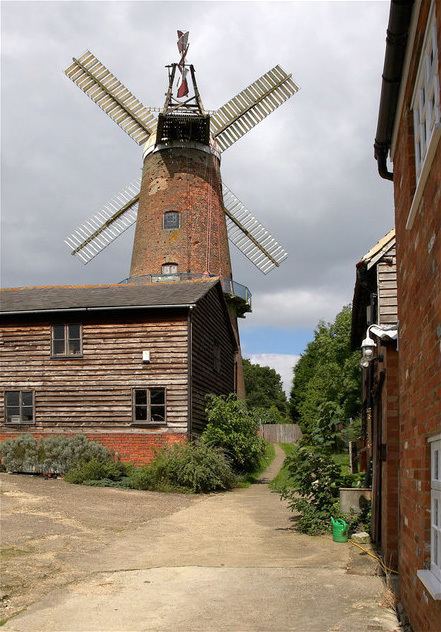Purpose Corn mill Storeys Six storeys | Year built 1830-1832 | |
 | ||
Operator(s) Quainton Windmill Society Address Quainton, Aylesbury HP22 4AR, UK Similar History on Wheels Motor Mu, Welwyn Roman Baths, Sulgrave Manor, Buckinghamshire Railway Centre, Roald Dahl Children's Gallery | ||
Quainton windmill
Quainton Windmill (aka Banner Mill) is a historic windmill in the village of Quainton, Buckinghamshire, England, United Kingdom.
The 70 ft (20m) six-storey brick tower mill, built 1830–32, is one of the most visible buildings in the village. It was derelict for most of the 20th century it has now been restored and can grind wheat into flour. The windmill was built by James Anstiss and it is still owned by the Anstiss family. It is the tallest windmill in Buckinghamshire.
The mill had a steam engine installed early in its working life. Until 1881, it was wind-driven, but milling came to an end in 1900. The building remained unused as a mill, without a cap or sails, until 1974, when the owner formed the Quainton Windmill Society, with the aim of restoring the windmill. The Society spent 23 years undertaking restoration work. In 1997, milling was re-established.
In 2013 English Heritage and The Department of Culture, Media and Sport have upgraded the listing status of the mill from Grade II to Grade II* for the following principal reasons:
An external survey was carried out on 2 October by Oxley Conservation and Bonwick Milling Heritage Consultancy. Using a giant “cherry- picker” enabling them to closely examine the structure of the mill and to provide a detailed report of its condition. The report states: ‘The extent of decay suffered is such that the head frame timbers have been significantly weakened and will be particularly vulnerable to failure in adverse weather conditions [high winds]; this risk is heightened by the sails and fantail which will exert tremendous forces on the timbers.’ With have agreement of English Heritage and the A.V.D.C. Historic Building Risk Officer the Sails and the Fantail were removed in December 2013 to reduce the stress on the timbers.
The mill is open Sundays between 10am and 2pm between March and October.
